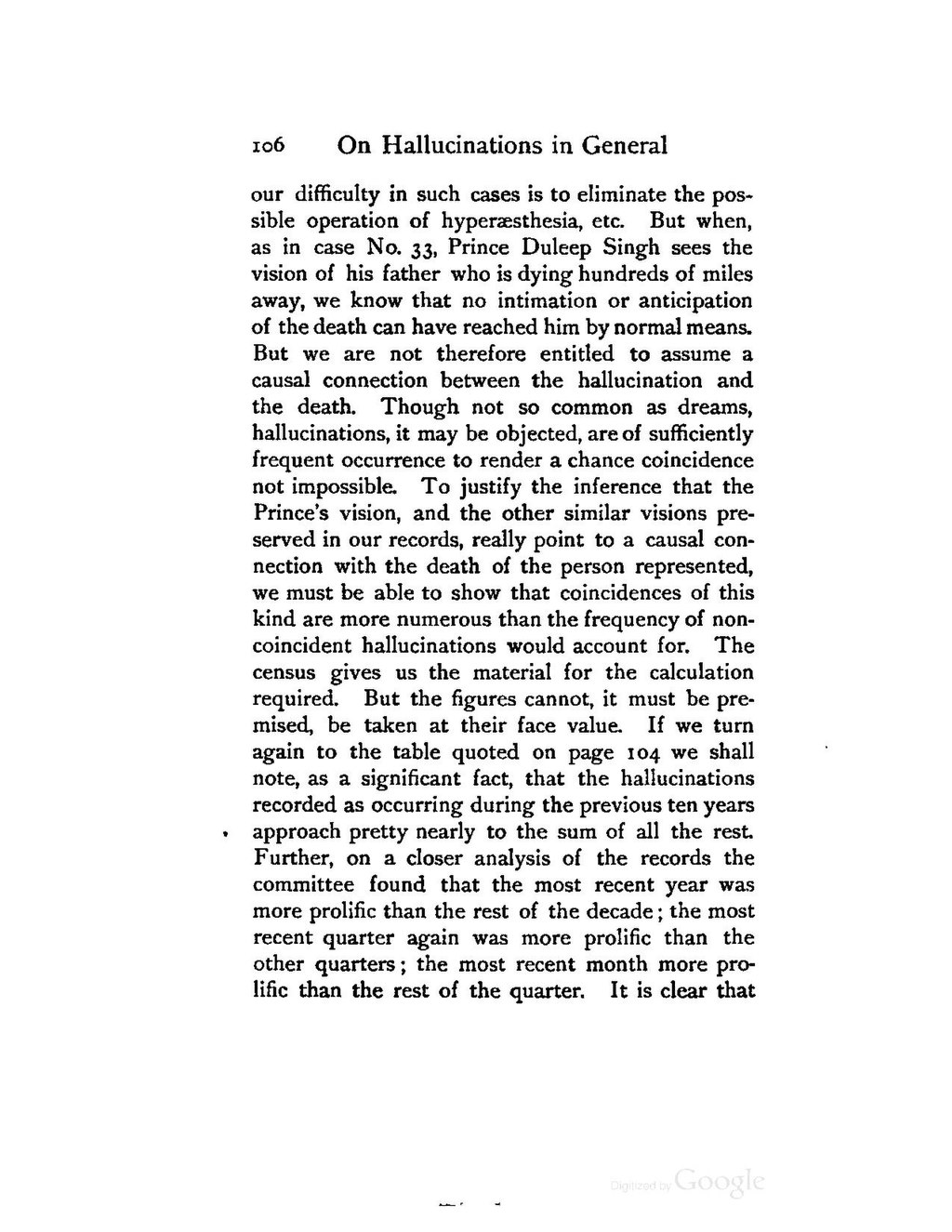our difficulty in such cases is to eliminate the possible operation of hyperaesthesia, etc. But when, as in case No. 33, Prince Duleep Singh sees the vision of his father who is dying hundreds of miles away, we know that no intimation or anticipation of the death can have reached him by normal means. But we are not therefore entitled to assume a causal connection between the hallucination and the death. Though not so common as dreams, hallucinations, it may be objected, are of sufficiently frequent occurrence to render a chance coincidence not impossible. To justify the inference that the Prince's vision, and the other similar visions preserved in our records, really point to a causal connection with the death of the person represented, we must be able to show that coincidences of this kind are more numerous than the frequency of noncoincident hallucinations would account for. The census gives us the material for the calculation required. But the figures cannot, it must be premised, be taken at their face value. If we turn again to the table quoted on page 104 we shall note, as a significant fact, that the hallucinations recorded as occurring during the previous ten years approach pretty nearly to the sum of all the rest. Further, on a closer analysis of the records the committee found that the most recent year was more prolific than the rest of the decade; the most recent quarter again was more prolific than the other quarters; the most recent month more prolific than the rest of the quarter. It is clear that
